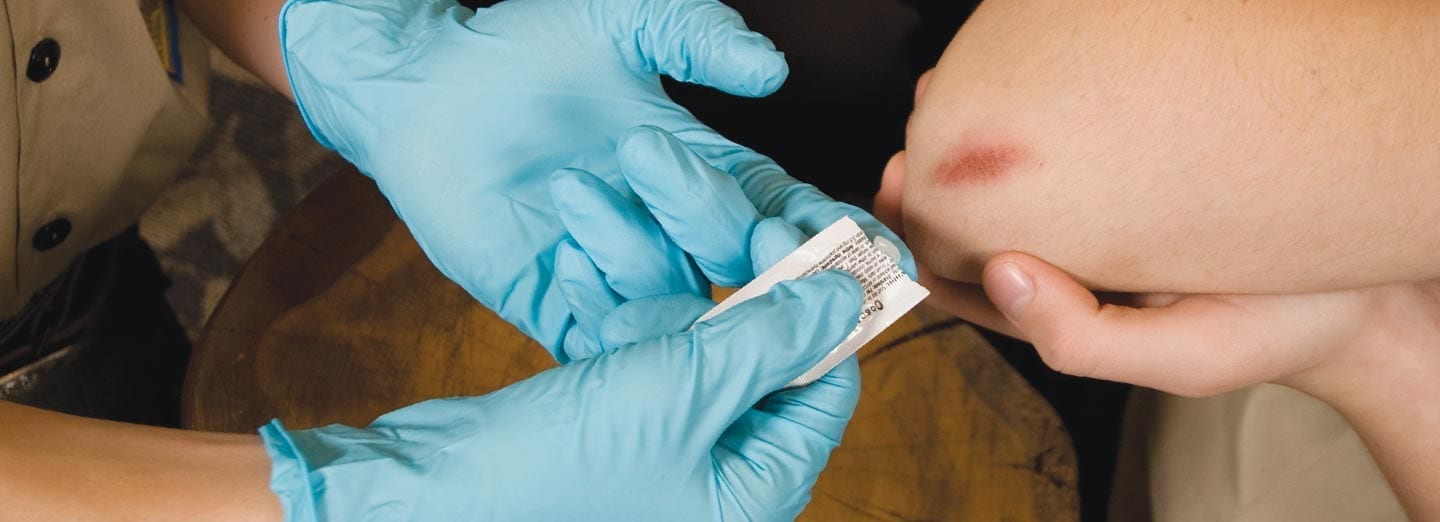
SUMMARY
The most common injuries reported at BSA summer camps are cuts, abrasions, and punctures. Most are minor and require little more than basic first aid. However, some injuries can become more serious if not treated correctly. A few simple steps can take care of these annoying injuries and get you back to the action in a hurry and in good shape.
GENERAL INFORMATION
Cuts are by far the most common of these types of injuries, and they most often involve a woodworking tool—like a pocketknife—that is used as part of our program beginning in Cub Scouting.
Abrasions, such as scrapes and friction injuries, are also common. Falling and scraping a knee or hand while running or riding a bicycle are the most common causes.
Puncture wounds are those injuries where a sharp, usually narrow object pierces the skin and goes deeply into the tissue. Puncture wounds are less common than cuts or abrasions but do occur at home, in the woods, and at camp. Stepping on a nail, getting a splinter, or being pierced by an awl during leathercraft are frequent causes of puncture wounds.
First Aid
Minor wounds are treated the same and use the simple techniques taught in all levels of our program from Cub Scouting to Venturing.
- Clean the wound: Simple soap and water work fine. In the case of a puncture, remove the small item (splinter, thorn, nail, etc.) unless it is in the face or eye.
- Treat the wound: A small amount of antibiotic ointment or cream might help prevent infection. Wound-care experts have different opinions on the effectiveness of antibiotic creams, and some have argued that these medications are actually harmful. Others disagree. Be sure you don’t use something that might cause an allergic reaction. Some skip this step altogether and simply cover the wound with a clean bandage.
- Cover the wound: A clean bandage is all that’s needed for most of these types of injuries, but absorbent gauze and medical tape might be needed for larger abrasions. Replace a bandage that becomes wet, soiled, or bloody.
Note that more serious wounds should be handled a bit differently. Deep punctures, larger cuts, any wound that looks infected (is red, oozes, or is hot), or one that won’t stop bleeding might need to be evaluated by a medical provider. Puncture wounds might especially require attention, as a tetanus booster might be needed. Wounds around eyes and punctures in the chest, neck, or abdomen might also need rapid medical attention. Animal or human bites will require medical attention, especially if the skin is broken. Report to your council any incident that requires medical care beyond simple Scout-rendered first aid.
RESOURCES
- BSA Wilderness First-Aid Curriculum and Doctrine Guidelines
- First Aid merit badge pamphlet
- Mayo Clinic, Cuts and scrapes
- Mayo Clinic, Puncture wounds
- Scouts BSA handbooks


